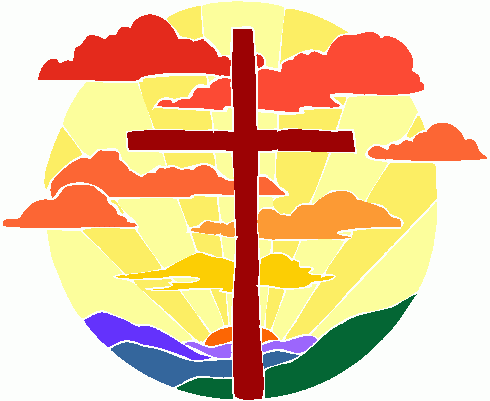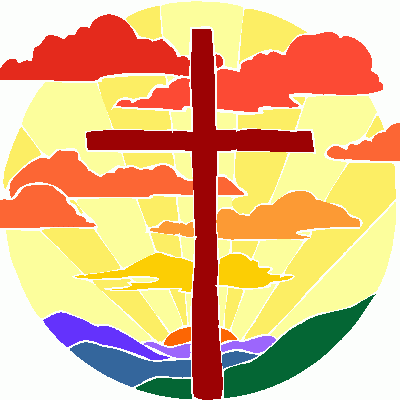The word “testament” is not commonly used these days. The dictionary includes two main definitions: “proof”, similar to “testimony”, and “will”, as in “last will and testament”. The first definition best matches what in meant by the Biblical “testaments”. Another term sometimes used for them is Old and New Covenants, as in the contractual covenants between God and His people.
The Bible has a definite, well-known division into the Old Testament and the New Testament. The two are very much related, part of the same one story. But they have different perspectives on that story.
First, Some Context
Length
The Old Testament is longer in a couple of ways.
In physical length, it contains more individual books, 39 of the 66 total, while the New Testament has 27 books. In pages, my fairly-typical favorite hard-copy Bible has 688 pages in the Old Testament and only 200 in the New, for a total of 888 pages.
In time frame, the Old is much longer, from the beginning of time until about 400 B.C. Its detailed history that can be well matched to non-Biblical years starts with Abraham in about 1900 B.C. (after Creation, Garden of Eden, Flood, and the Tower of Babel, which are all covered in the first eleven chapters of the first book, Genesis.)
New Testament history starts with quick reviews of Jesus’ birth before describing His three years of public ministry in detail. It then continues for only one generation, with most of it written within 30 years of Jesus’ death and resurrection. Only Revelation, written in about 90 A.D., is any later. So the entire New Testament is documenting only about 100 years of human history.
Dividing Point
The Old Testament gives the details of the covenants before Jesus, while the New gives the history of Jesus’ time on earth, His initiation of the new covenant, and the spread of the Gospel afterward. Basically, the Old Testament prepares the way for Jesus; the New Testament shows the fulfillment of all that preparation. It’s no accident that our calendar divides time into “B.C.” (“Before Christ”) and “A.D.” (“Anno Domini”, or “in the year of the Lord”) 1.
In Between
During the 400 years between the end of the Old Testament and the beginning of the New Testament was…silence. During that time, no new prophets arose to speak for God. No new kings were anointed to lead the nation.
There were happenings and writings during the time, of course. We have books that describe that history. Collectively, they are known as “Apochrypha” or “Pseudepigrapha”. They provide interesting context to that inter-Testamental period, but they are not considered to have the authority of actual God-inspired Scripture. (For more on these books and the arguments against their authority, see articles here, here, and here.)
So, what happened before-and-after?
Before, God Prepared
Before, in the Old Testament, God prepared. He had a plan all along, and the Old Testament tells us how God did all the setup, putting everything in place for His ultimate goal.
- He prepared a universe, and a specific planet, for humans to live (Genesis 1-2).
- He prepared a people group to be the first to demonstrate His nature to the rest of the world.
- He started with one man, Abraham, guiding him to the location of the future nation (Genesis 12:1-3).
- He steered Abraham’s children, grandchildren, and great-grandchildren to bond together as “Hebrews” under the adversity of slavery in Egypt (Genesis 47:1-11, Exodus 1:8-12).
- He showed Himself in dramatic power while rescuing the now two-million or more descendants from Egypt (Exodus 3:9-10, Exodus 7 through 14 (Plagues, Passover, Red Sea)).
- He prepared a homeland for that group.
- He showed Himself in intimate care while leading the rescued through the wilderness back to the homeland that He had promised to Abraham (Exodus 16:1-18).
- He guided the new nation in settling into that land (Joshua).
- He shepherded the unruly people through several hundred years of learning how to follow Him, with both blessings for obedience and consequences for disobedience (1 Samuel, 2 Samuel, 1 Kings, 2 Kings, 1 Chronicles, 2 Chronicles).
- He prepared a system of laws and sacrifices that foreshadowed what was to come.
- He showed His holiness by teaching that He could only be approached in total reverence and purity (Exodus 19).
- He showed the impossibility of that complete purity with righteous laws that were beyond human ability to keep (Exodus 20-23, Romans 2:12, 3:19-20).
- He provided a way to bridge that gap with sacrifices, symbolically transferring sin onto animals. With the animal’s death, taking their sin with it, His people were able to still have a relationship with their holy God (Leviticus 1-7 (Sacrifices), Exodus 25-31 (Tabernacle) ).
During this time, God also gave hints of the full plan. He gave prophecies of what the goal, the Messiah, would be like. He gave enough clues so that anyone looking carefully would be able to recognize when the time had come.
After, God Arrived
After, in the New Testament, God arrived in person (John 1:1-5, 14, Hebrews 1:1-3). Jesus was born into that people group, in that homeland. He fulfilled the laws, met all the predicted requirements, and acted as the ultimate sacrifice, building a permanent bridge to replace the temporary animal ones (Hebrews 10:1-4, 11-14).
Jesus interacted personally with those He chose, and who accepted and chose to follow Him. He gave them an up-close-and-personal experience with the full character of God, with the “human face of God” (Matthew, Mark, Luke, John). Then He sent those first followers out to gather more followers, continuing the original mission of demonstrating God’s nature to the entire world (Matthew 28:18-20, Acts).
That moment in history was the point of history. All of the preparation was finished; the plan was complete. Now, God had provided the way for all people everywhere to have the rich relationship with Him that was — and still is — His ultimate goal (John 3:16, John 14:1-3, Revelation 21:1-6).
What About Right Now?
We are still in that great gathering time, waiting until God’s timing to completely finish the story. As Revelation teaches, Jesus will return in power to tie up all the loose ends. He will fulfill all remaining prophecies dating back to the beginning of Genesis, and will bring about the kingdom He has planned all along: a kingdom of redeemed people living with Him forever … and with no sin in sight.
Now is the time when each person gets to make their choice: Whether to be part of that kingdom or not. Both Old and New Testaments bring each individual to their own dividing point. Jesus is again the focus: Their choice of whether or not to believe in Him and accept His offer of salvation is what makes all the difference. That decision will determine their fate when this story ends, and a new, eternal, one begins.
Footnotes and Scripture References
- Those who prefer not to acknowledge Jesus have advocated differing identifiers, C.E. for “common/current era” and B.C.E. for “Before common/current era”. That is more religiously neutral. But it is still the same distinction, marking time in relation to Jesus’ life on earth. See this article for more information.


